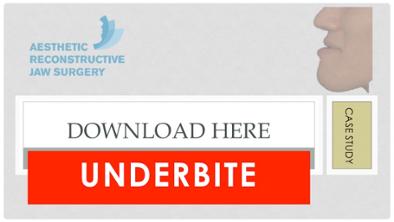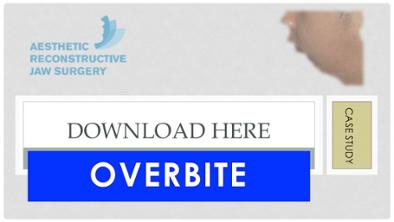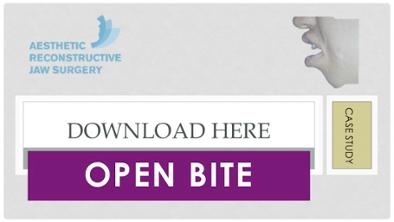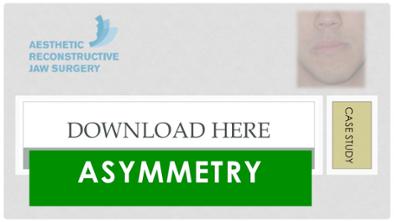Share this
Is orthognathic surgery medically necessary?
on November 1, 2016

It is not uncommon for insurance companies to question the medical necessity of orthognathic surgery. Certainly, the most noticeable benefit of orthognathic surgery is the cosmetic improvement. However, the objective of the surgery is not always cosmetic enhancement but a functional restoration. Sure, there are some that are more cosmetic than functional. Dentofacial deformities, which orthognathic surgery seeks to correct, constitute a spectrum rather than specific disorders. Can we draw a line separating the functional from the cosmetic?
As an oral and maxillofacial surgeon, I naturally consider orthognathic surgery as primarily functional correction and hence medically necessary. In Singapore, the Ministry of Health has also included a wide range of orthognathic surgical procedures onto its “Table of Surgical Procedures”, allowing the use of Medisave for such surgeries. That is a strong endorsement of the medical necessity of corrective jaw surgeries as Medisave cannot be used for cosmetic procedures. Patients with dentofacial deformities suffer from a wide variety of problems. This may range from difficulties with speech, inability to chew food, obstructive sleep apnea, temporomandibular joint disorders, etc. Some of these are subjective while others are more measureable.

 For this post, I will focus on dentofacial deformities that pose masticatory problems. This arises when the upper and lower teeth are not biting properly. There may be an underbite, whereby the lower jaw is longer than the upper jaw and hence the lower teeth are positioned further in front than the upper, hence the term “underbite”. Patients with this condition are unable to use their incisors to bite food off since the incisors are unable to meet. This constitutes a rather severe disability that affects daily activities. On the other end of the spectrum is the patient with an overbite, a situation where the upper jaw is excessively more protruding that the lower jaw. This may be due to a excessive growth of the upper or deficient growth of the lower or a combination of both. It is often associated with the lower incisors biting onto the palate of the upper, causing pain or discomfort.
For this post, I will focus on dentofacial deformities that pose masticatory problems. This arises when the upper and lower teeth are not biting properly. There may be an underbite, whereby the lower jaw is longer than the upper jaw and hence the lower teeth are positioned further in front than the upper, hence the term “underbite”. Patients with this condition are unable to use their incisors to bite food off since the incisors are unable to meet. This constitutes a rather severe disability that affects daily activities. On the other end of the spectrum is the patient with an overbite, a situation where the upper jaw is excessively more protruding that the lower jaw. This may be due to a excessive growth of the upper or deficient growth of the lower or a combination of both. It is often associated with the lower incisors biting onto the palate of the upper, causing pain or discomfort.
 Overbite and underbite are discrepancies in the horizontal relationship of the upper and lower jaws. Discrepancies can occur in the vertical dimensions as well. When there is excessive growth of the back part of the upper jaw without a corresponding growth in the front, an open bite develops. Like the case of the underbite, these patients cannot bite through their food with their incisors.
Overbite and underbite are discrepancies in the horizontal relationship of the upper and lower jaws. Discrepancies can occur in the vertical dimensions as well. When there is excessive growth of the back part of the upper jaw without a corresponding growth in the front, an open bite develops. Like the case of the underbite, these patients cannot bite through their food with their incisors.
 Other than horizontal and vertical deformities, there can also be transverse skeletal deformities. This is a situation commonly described as a cross bite. In such situations, the molar or premolars at the back of the mouth are overlapping each other in a way that makes it difficult to chew food. The skeletal discrepancy causes the molars and premolars to overlap their counterparts in the opposing jaw instead of biting on them.
Other than horizontal and vertical deformities, there can also be transverse skeletal deformities. This is a situation commonly described as a cross bite. In such situations, the molar or premolars at the back of the mouth are overlapping each other in a way that makes it difficult to chew food. The skeletal discrepancy causes the molars and premolars to overlap their counterparts in the opposing jaw instead of biting on them.
Do these masticatory deficiencies constitute a medical necessity for treatment? Absolutely. While it is true that nobody dies of a jaw deformity, quality of life is severely affected when chewing become difficult.
Speech is another factor that motivates a patient to seek treatment. While there is a lack of high-level scientific evidence to prove that corrective jaw surgery improves speech, it is common sense that if there is an open bite and the mouth can’t even close, the pronunciation of certain words will be affected. Jaw surgery alone may not be able to improve speech but it does make speech therapy easier when the structures through which sound emanates from are repositioned into their normal proportions.
Insurance companies need not worry about abuse as orthognathic surgery is no walk in the park. It requires a period of thorough planning, a few days of hospitalization and a couple of weeks out of school or work. And there is still the orthodontic treatment that goes along with it. There are many patients who would rather live with their deformities and the associated functional discrepancies than to undergo surgery. Those who do decide to proceed with surgery are really affected by it and are prepared to accept the risks.
Some insurance companies have objective guidelines about when orthognathic surgery is medically necessary and when it is cosmetic. For dentofacial deformities that presents with masticatory problems, they quantify the degree of discrepancy in that patient. If there are two standard deviations away from the norm, they consider it to be medically necessary. While this is not an ideal guideline as each patient’s ability to adapt to the degree of discrepancy is different, it does impart some transparency and consistency to the claims process.
Orthognathic surgical is a functional correction of jaw deformities. The fact that a highly visible cosmetic enhancement is a by-product of the surgery should not render it as cosmetic surgery.
Share this
- Jaw Surgery (93)
- Dental Implants Singapore (90)
- Orthognathic Surgery (48)
- Replacing Missing Teeth (26)
- Missing Teeth Options (23)
- Underbite (23)
- Bone Grafting (21)
- Costs (18)
- Facial Aesthetics (18)
- Aesthetics (17)
- dental implants (16)
- corrective jaw surgery (15)
- BOTOX (11)
- Dermal Fillers (11)
- Wisdom teeth (10)
- Fixed Implant Dentures (8)
- Loose Dentures Singapore (6)
- Medisave (6)
- sleep apnea (6)
- Braces (5)
- Dental Pain (5)
- Dentures in Singapore (5)
- Loose Teeth (5)
- Tooth Extraction (5)
- jaw deformities (5)
- bimax (4)
- bone graft (4)
- maxillomandibular advancement (4)
- all-on-4 (3)
- bimaxillary protrusion (3)
- chin implant (3)
- facial asymmetry (3)
- full mouth dental implants (3)
- genioplasty (3)
- immediate implant (3)
- removal of an integrated dental implant (3)
- third molars (3)
- wisdom tooth surgery (3)
- My Dentures Don't Fit (2)
- VME (2)
- bone graft healing (2)
- distraction osteogenesis (2)
- medical tourism (2)
- obstructive sleep apnea (2)
- orthodontics (2)
- plastic surgery (2)
- CT guided dental implants (1)
- Double jaw surgery (1)
- Invisalign (1)
- Periodontal Disease (1)
- Permanent Dentures Singapore (1)
- before and after photos (1)
- facial trauma (1)
- fractured dental implant (1)
- oral appliance therapy (1)
- root canal treatment (1)
- veneers (1)
- vertical maxillary excess (1)
- September 2019 (2)
- July 2019 (2)
- May 2019 (2)
- August 2018 (1)
- October 2017 (1)
- September 2017 (2)
- August 2017 (1)
- June 2017 (2)
- May 2017 (4)
- April 2017 (1)
- March 2017 (1)
- February 2017 (3)
- January 2017 (3)
- December 2016 (1)
- November 2016 (2)
- October 2016 (4)
- September 2016 (9)
- August 2016 (5)
- July 2016 (11)
- June 2016 (14)
- May 2016 (6)
- April 2016 (2)
- March 2016 (1)
- January 2016 (7)
- December 2015 (10)
- November 2015 (4)
- October 2015 (9)
- September 2015 (7)
- August 2015 (1)
- July 2015 (6)
- June 2015 (3)
- May 2015 (7)
- April 2015 (5)
- March 2015 (8)
- January 2015 (5)
- December 2014 (7)
- November 2014 (7)
- October 2014 (6)
- September 2014 (8)
- August 2014 (5)
- July 2014 (7)
- June 2014 (8)
- May 2014 (9)
- April 2014 (10)
- March 2014 (6)
- February 2014 (8)
- January 2014 (3)
Subscribe by email
Email subscription




No Comments Yet
Let us know what you think